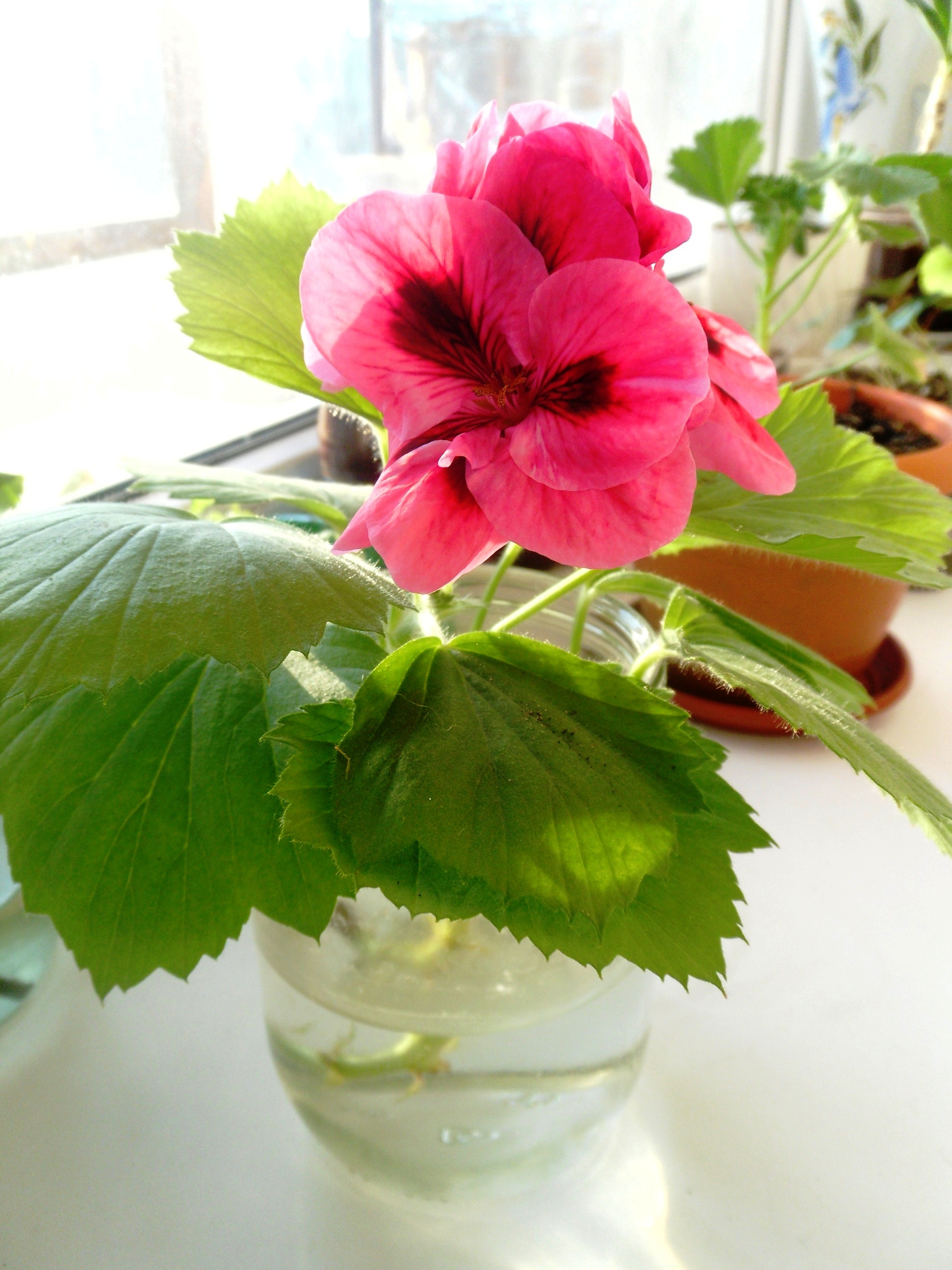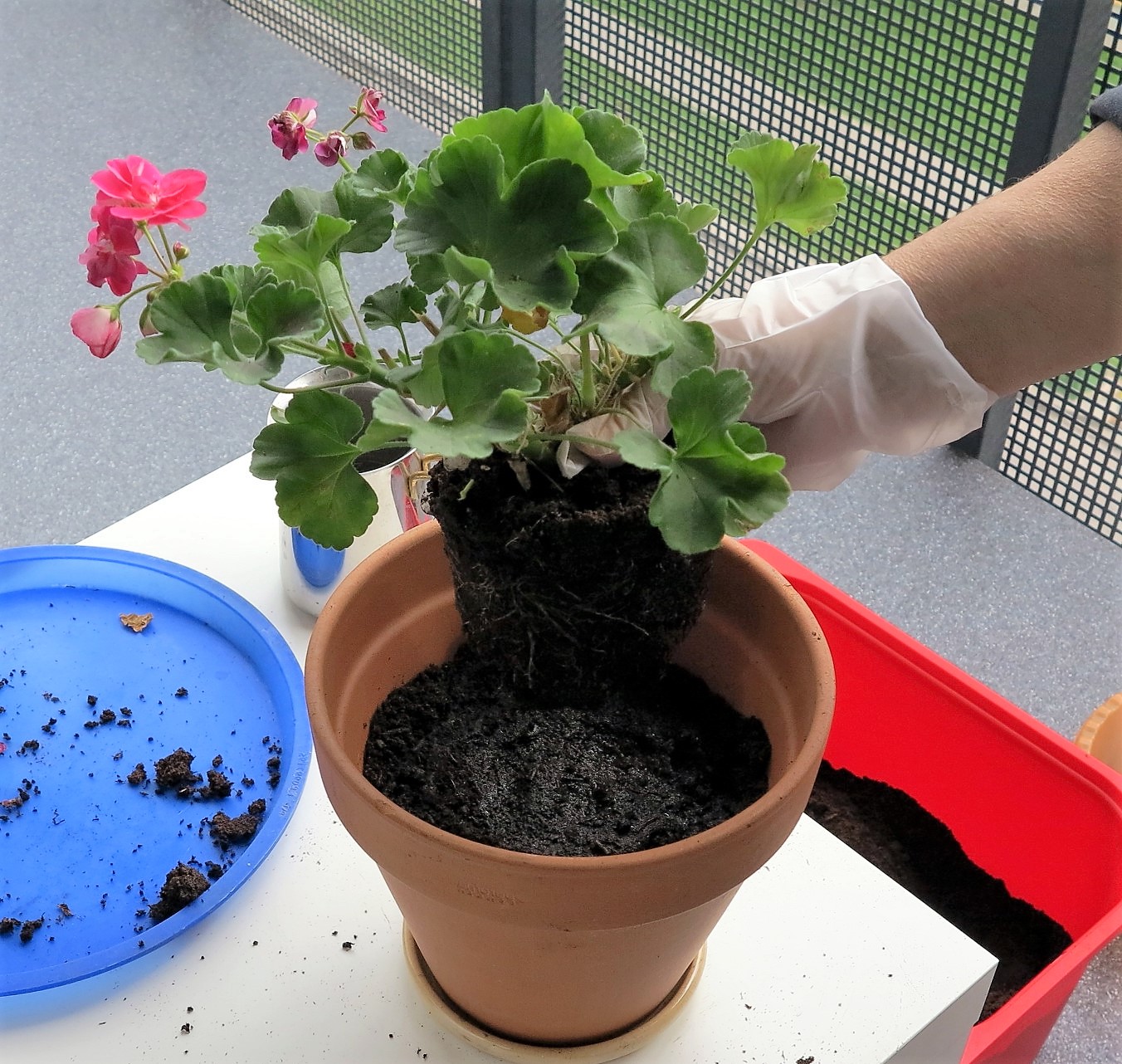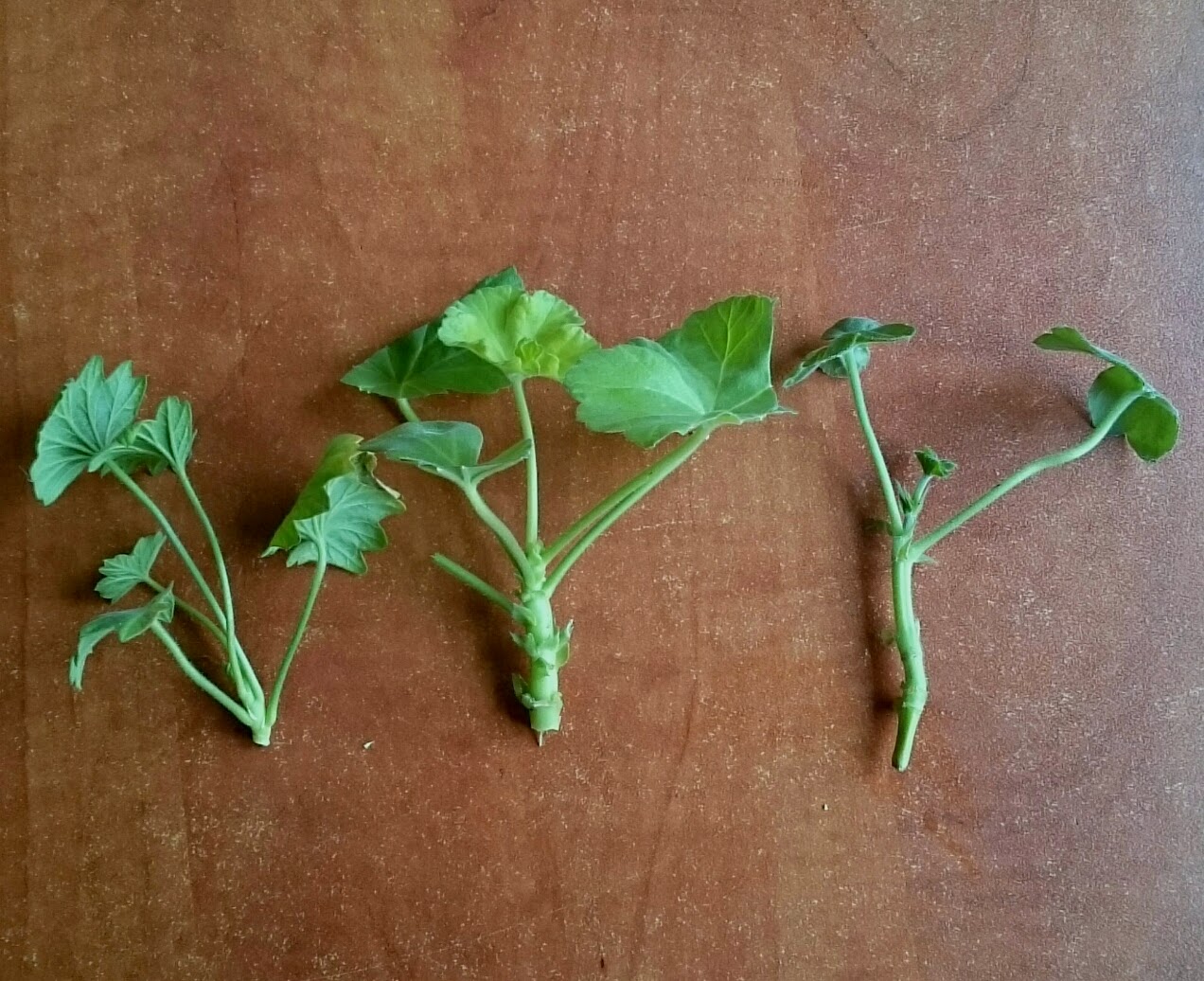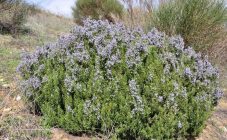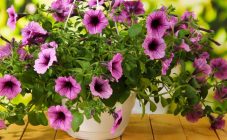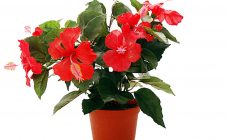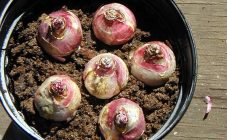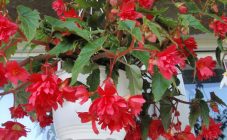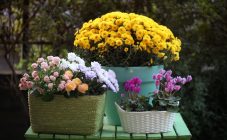Pelargonium is a perennial plant, herbaceous or semi-shrub. Originally from South Africa, therefore it is light-loving and thermophilic, does not tolerate frost and low temperatures at all, easily tolerates drought and loves poor soils. When organic matter is introduced into the soil, it stops blooming and begins to abundantly build up green mass.
In countries with cold climates, it is grown as a houseplant, in everyday life it is called room geranium or home geranium. It occurs with the real geranium from the same genus Geranium, has many similar features in the structure of the flower, leaves, stems, the shape of the seed pods, but has a completely different genetic code. No one in the world has yet managed to cross these plants and get offspring from them.
About the plant
Pelargonium is a beautiful indoor flower that has been grown on windowsills for several hundred years. To date, about a thousand varieties with various characteristics have been bred by amateur flower growers.
A flower of simple pelargonium has five petals and an irregular shape, similar to the shape of viola flowers - two upper petals are larger than the three lower ones bent. The flowers are collected in umbrella inflorescences, spectacular and bright. Colors from white to dark burgundy, all shades of pink and red. Genetically, it cannot have blue and blue hues, unlike field or meadow geranium, which does not have a red color in genetics.
Pelargonium pleases with its flowering almost all year round with proper agricultural technology. In summer, it serves as an excellent decoration for a balcony or a flower garden on the street, but with the onset of low temperatures, it requires moving to a warm room.
Among the pelargoniums, there are several varieties:
- zonal - the most common type with a circular pattern on the leaves, with simple or double flowers;
- fragrant - a bush with lush greenery and small nondescript flowers, when shaken fills the room with a lemon or mint smell;
- royal - a very bright plant with short stems and large flowers of various colors;
- ampelous or ivy-leaved - thin stems hang down, covered with flowers of various colors, double and simple, looks great in pots.
Pelargonium: home care
Growing care requires minimal effort. Proper care will allow you to admire the lush and abundantly flowering plant all year round. A flower with regular pruning will live up to five years before it has to be replaced with a new shoot or seedling.
For home pelargonium, the conditions of a human home with a constant temperature comfortable for a person are ideal. In addition, it perfectly tolerates the high temperature on the windows in the summer and in winter it will completely rest on the cool window, provided that the leaves do not come into contact with cold glass.
Home pelargonium loves illuminated and sunny windowsills, being in partial shade significantly inhibits the growth and flowering of the plant, only in the hottest hours of the summer in the sun it is worth shading it slightly from direct sunlight.
For beginners, it is important to clarify that caring for pelargonium at home involves proper watering. Pelargonium cannot be sprayed with water, she does not like this very much, just as she does not like high humidity in the apartment.
Watering pelargonium is necessary when the earthen lump dries up significantly, and watering should not be abundant. The plant is prone to decay of the roots and root collar - if this happens, then it will be impossible to save the plant.
The plant loves water at room temperature, cold water causes stress and the cessation of the formation of new buds. In summer, daily watering is possible, in winter no more than twice a week.
For abundant flowering, you can water the plant with a very weak iodine solution - one drop per liter of water, water at the edge of the pot, trying not to get on the root collar.
Pelargonium transplant
The soil for pelargonium should be water and air permeable, light and fertile, without excessive organic matter. For inexperienced flower lovers, it is best to start with a purchased plant and purchase soil for planting and transplanting in specialized stores. Experienced growers are quite capable of mixing garden soil, sand and peat in equal amounts themselves, and then steaming and disinfecting the mixture.
At the bottom of the pot, drainage is laid with a layer of a couple of centimeters, while the pot should be small, 10-12 centimeters in height and the same diameter. Abundant flowering in pelargonium begins when the root system braids a clod of earth, and the plant becomes cramped. In a large pot, you can plant two plants of the same type or different colors at once.
How to transplant pelargonium into another pot correctly, if the plant is depressed, the roots are visible from the drainage holes:
- You need to take a pot a little larger than the current one, add no more than 4-5 centimeters in diameter and height.
- Rinse the pot with boiling water for disinfection, lay out a layer of drainage and carefully transfer the plant to a new home, trying not to damage the earthen lump.
- Fill the spaces along the walls with fresh fertile soil and tamp lightly.
- Drizzle and place in a bright and cool place for several days.
Pruning
In the summer, when the plant blooms profusely, faded inflorescences and yellowed leaves are removed from it. Pelargonium pruning is carried out in the autumn, if over the summer the bush has lost its compactness and decorative effect and in the pre-winter period - to renew the bush.
Pre-winter pruning must be ruthless and merciless. All shoots that have grown over the last year are removed, leaving only small basal hemp with buds. In this case, home geraniums that have rested over the winter will form a new dense crown by spring and will delight the owner with abundant flowering.
In early spring, the newly regrown crown needs to be shaped and cultivated - to remove the bare shoots that have stretched out over the winter. For shoots with more than 6 leaves, it is worth pinching the tops of the crown to make the crown more compact and dense.
Reproduction
There are several ways to propagate and grow homemade pelargonium:
- seeds,
- cuttings,
- dividing the bush.
Pelargonium seeds should be propagated if it is not possible to purchase cuttings of the variety you like. The seeds have to be bought from a trusted manufacturer or in a specialized store. It should be remembered that amateur flower growers cannot collect seeds for sale from hybrid plants and sell them themselves; obtaining such seeds is possible only in special laboratory conditions.
Seed propagation is carried out by sowing seeds in a container with moist soil, the container is covered with a transparent film on top and placed in a warm and bright place. The optimum germination temperature at which the seed germinates is 25 degrees.
The container should be ventilated every day and the soil should be moistened if necessary. In a couple of weeks, shoots should appear, the plants are grown until two or three true leaves appear and transplanted from separate small pots.
After picking, the temperature of the content should be reduced to 18 degrees for better rooting and survival of young flowers. At two to three months, young pelargoniums are planted in adult pots and should be looked after like adult plants.
Breeding and reproduction is also possible by dividing the bush. This should be done in conjunction with spring pruning. The bush is divided in half with a sharp knife along with an earthen lump and each part is planted in a separate pot. Healthy specimens will quickly gain strength and delight the owner with abundant flowering.
The fastest and easiest way to get a new pelargonium bush is by cuttings. In the spring, from the plant you like, cut off green, not stiff tops of shoots up to 10 centimeters long. The cut is made obliquely under the bud, the lower leaves are removed and the cutting is kept on the table for a couple of hours, until a film is formed on the cut. After that, the sections are powdered with activated carbon and the cuttings are planted in pots with slightly moistened soil.
The plant is placed in a bright place where direct sunlight does not fall, water it gently, in small portions, so as not to cause rotting. After a month, when the cutting is finally rooted and grows, you should pinch the crown at a height of 10-12 centimeters. This is done so that the bush turns out to be lush.
You can put the cuttings in water and wait for the roots to appear, and then plant them in the ground. Water needs to be changed every day for fresh water, this will help to avoid rotting of the cuttings.
Pelargonium should be cut and propagated after the month of February, since at this time the plant wakes up after the winter dormant period and spring plantings take root almost completely.
Pelargonium is a beautiful flower, undemanding in care and living conditions, will always delight its owner with wonderful flowers and magnificent color. It is believed that she protects her owners from quarrels and the evil eye, helps to strengthen material wealth in the house.

